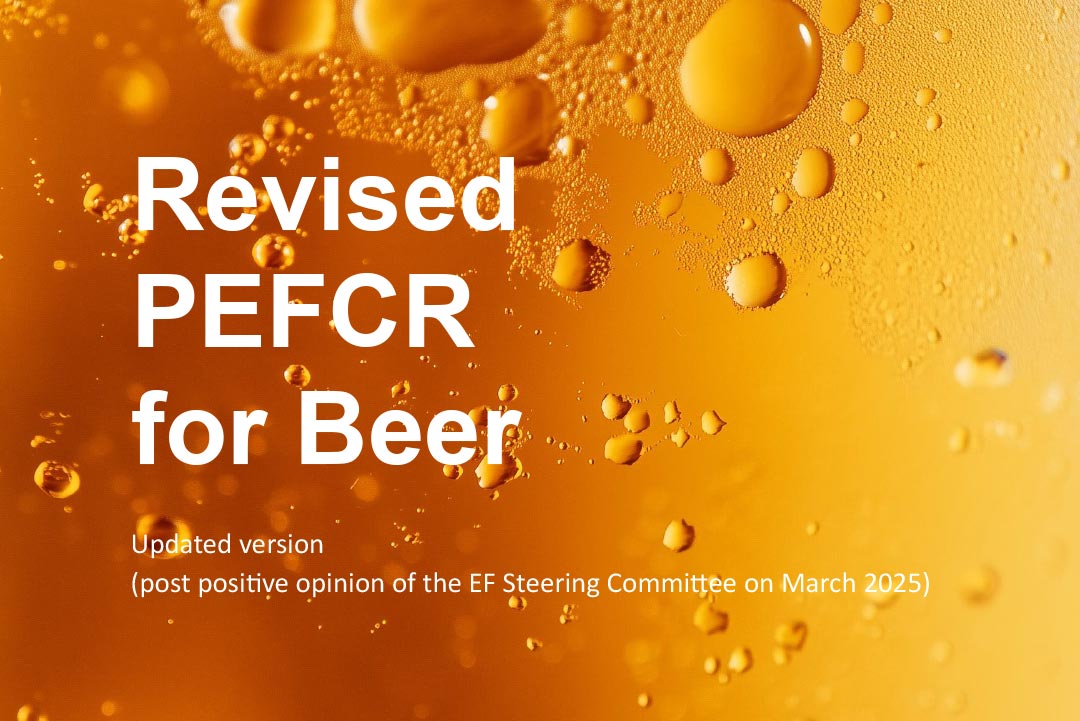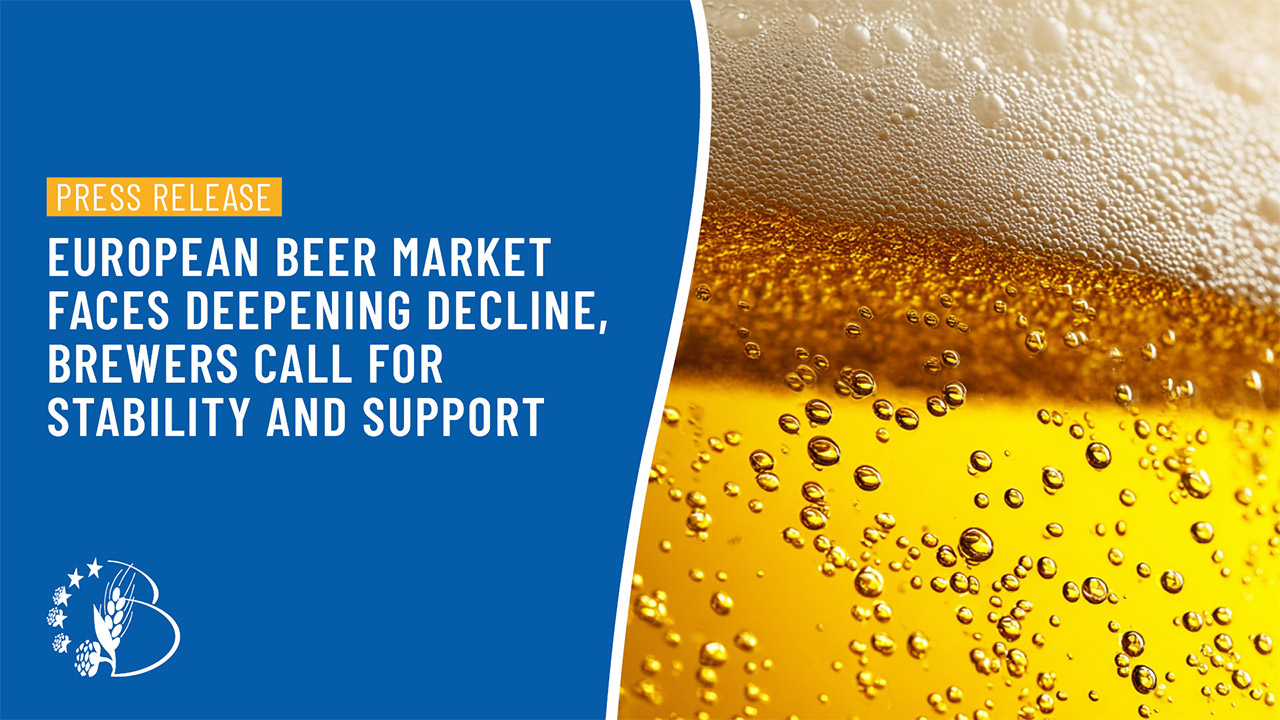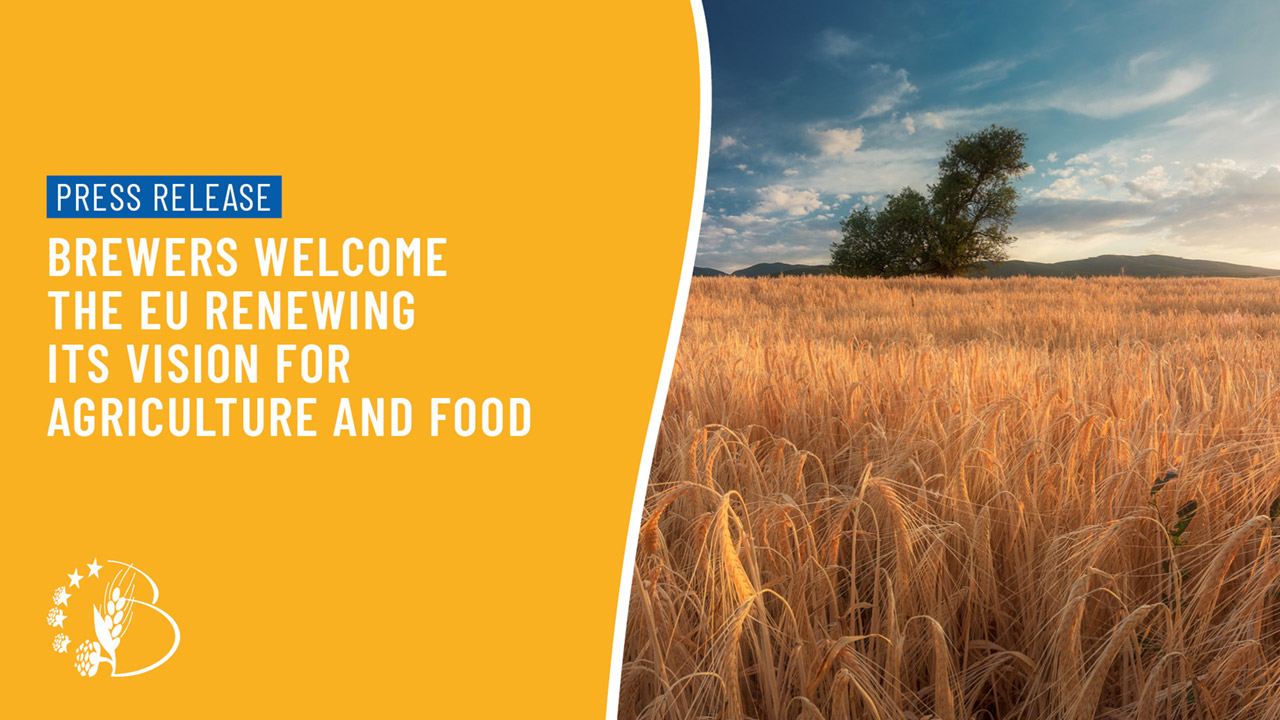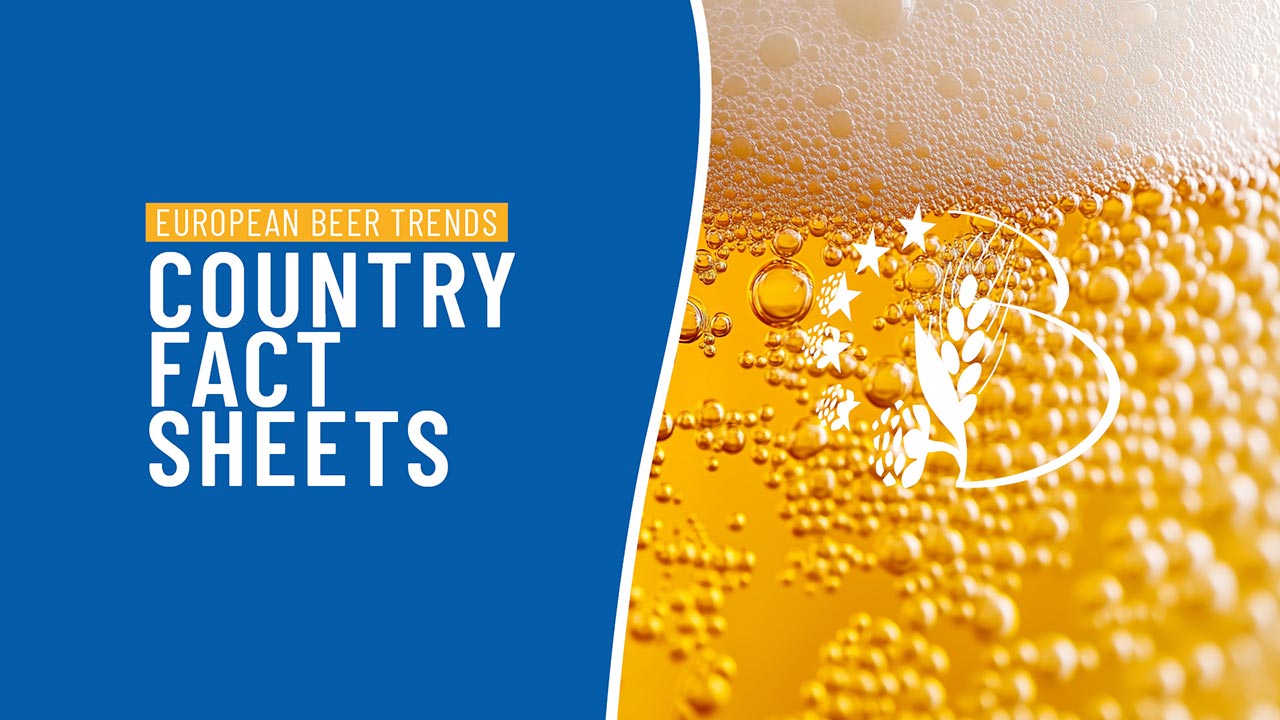
Environmental Footprinting
Beer Product Environmental Footprint Category RulesThe Beer Product Environmental Footprint Category Rules (PEFCR) provide a methodology for assessing the environmental footprint of different beers, considering a wide range of criteria and covering the full life cycle of the product, from grain to glass.
They are a testament to The Brewers of Europe’s aim to have a positive impact on society, people and the planet. For many years we have encouraged sustainable practices in our brewing processes, in our supply chains, and in how beer is consumed and enjoyed. The beer sector today innovates, leads by example and brings people together for sustainability.
We are central to a circular European economy and our progress goes hand-in-hand with the aims of the European Union in terms of environmental sustainability, corporate sustainability reporting and due diligence.
The Beer PEFCR finalised in 2018 during the PEF pilot phase were revised following the call issued by the European Commission in January 2022. The updated version received a positive opinion from the Environmental Footprinting Steering Committee in March and is currently valid until end 2025.
Please click on the links to the updated PEFCR documents below:
“The Product Environmental Footprint (PEF) method best distinguishes between valid green claims and green washing.”
What are Product Environmental Footprint Category Rules (PEFCRs)?
PEFCR aim to focus PEF studies on those aspects and parameters that are most relevant in determining the environmental performance of a given product. PEFCR further specify requirements made in Commission Recommendation (EU)2021/2279 and add new requirements where the PEF Guide provides several choices or where the PEF Guide is not covering sufficiently the particularity of life cycle of a specific product category.
Why did the European Commission back PEF?
The PEF methodology was developed by the European Commission based on existing life cycle assessment methods. It aims at identifying along the life cycle of beer the most relevant:
- environmental impact categories (16), including emissions to water, air and soil, resource use and depletion, and impacts from land and water use;
- life cycle stages;
- processes;
- elementary flows.
PEF allows to assess, display and benchmark the environmental profile of products. Where used for communication – B2B and B2C, it provides for truthful information, enabling environmentally friendlier choices.
Win – Win – Win – Win
Product environmental footprinting contributes to build a circular economy and to foster a better environment for green businesses.
- identifies hotspots throughout the life cycle stages of beer
- stimulates ‘green’ innovation
- guarantees a science-based, objective environmental performance assessment
- allows for fair ‘green’ competition
- responds to consumer expectations
- becomes better aware of the product environmental impact
- guarantees an informed choice for truly environmentally friendly products
- better use of resources
- less emissions
- less pollution
- less waste
- healthier habitats
- eases complying with regulations for environmental transparency
- aligns with market demands for environmental performance results
Why develop Product Environmental Footprinting Category Rules for Beer?
The main objective of this PEFCR is to develop a consistent set of rules to calculate the relevant environmental impacts of beer. Consumers like clear, consistent, honest communication. Consumers can also only be empowered to take informed decisions if there is a level playing field of comparable information.
That’s why Europe’s brewers welcome the European Commission’s initiative on substantiating green claims and developed Beer Product Environmental Footprinting Category Rules (PEFCRs).
The Product Environmental Footprint (PEF) is a method for measuring sustainability performance developed by the European Commission in a large multi-stakeholder approach with research institutions, NGOs, and sustainability experts from all industry sectors. The PEF makes it possible to determine relevant environmental and health impacts as well as resource-related burdens caused by a product. For the calculation, the entire life cycle of the products is considered, from raw material procurement to disposal.
Standardisation and comparability
PEF responds to the demand for standardisation and comparability of the environmental performance of products.
Standards already exist to assess the environmental impact of products (e.g. ISO14044:2006 for LCA – Life Cycle Assessment). However, due to the universal applicability of such standards, there is scope for interpretation and questions of interpretation which can impair the consistency and comparability of the results.
For us brewers it is important that we eliminate “cherry picking” (selecting calculation approaches that e.g. favour for example one packaging type over another).
Why the Beer PEFCR matters for the environment
Within the brewery, the PEFCR:
- identify and confirm hotspots;
- allow to drive environmental improvement;
- help track the environmental performance of products over time;
- guarantee harmonised reporting on environmental performance.
In the context of business-to-business relations, the PEFCR:
- allow to evaluate the suppliers’ and customers’ environmental performance;
- foster environmental improvement throughout the ecosystem of a product;
- ensure harmonised business-to-business reporting.
“Let’s not fight about the environmental matrix, but compete around the solution”.
How the PEF goes further
PEF has been developed based on existing standards and methods, but it is more detailed and prescriptive than previous guidance. For example, the PEF guidance specifies the impact assessment methods to be used for each environmental impact category, tables the circular footprint formula which eliminates “cherry picking” when it comes to end-of-life modelling approaches, and specifies the required data for each product category. Due to these characteristics, the comparability of results calculated according to the PEF method is better than in previous methods.
Why have the PEFCR for Beer been updated?
This PEFCR is a revision of the Beer PEFCR (European Commission, 2018), which was developed in the PEF pilot phase.
The Beer PEFCR Technical Secretariat agreed to update the PEFCR along the lines as spelled out in the European Commission call issued in January 2022 and entitled ‘Information on the update of the pilot PEFCRs’. The changes implemented in this updated PEFCR concern:
- the use of EF 3.0 datasets;
- the use of the PEFCR template as made available in Commission Recommendation (EU) 2021/2279;
- obvious clerical mistakes which are corrected;
- additional clarification is provided to help the user correctly implement the PEFCR.
The Technical Secretariat of the Beer PEFCR invited relevant stakeholders to participate in the PEFCR development. They include, amongst others, representatives from suppliers, farm and trade associations, consumers, government representatives, non-governmental organisations (NGOs), public agencies, independent parties and certification bodies. The identified relevant stakeholders were proactively informed by the Technical Secretariat about the opportunity to take part in the different public consultations.
This revision has been developed in a transparent manner and with the information on the different steps made available on the dedicated wiki page of the EU pilots’ website: https://webgate.ec.europa.eu/fpfis/wikis/display/EUENVFP/Beer+PEFCR.
The Brewers of Europe is committed to continue working with the European Union institutions and other interested parties to further develop the PEF.
The Product Environmental Footprint (PEF) method provides detailed and comprehensive technical rules on how to conduct PEF studies that are more reproducible, consistent, robust, verifiable and comparable. Results of PEF studies are the basis for the provision of EF information and they may be used in a diverse number of potential fields of applications, including in-house management and participation in voluntary or mandatory programmes.
For all requirements not specified in this Product Environmental Footprint Category Rule (PEFCR) the user of the PEFCR shall refer to Commission Recommendation (EU) 2021/2279.
The compliance with the present PEFCR is optional for PEF in-house applications, whilst it is mandatory whenever the results of a PEF study or any of its content is intended to be communicated.





